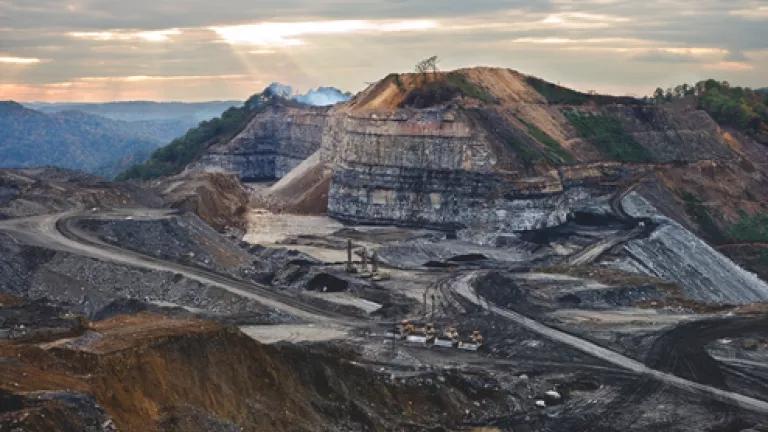
I have blogged countless times about mountaintop removal, the world's most destructive coal mining. My posts explore the various ecological, economic and cultural harm caused by this reckless strip mining. I've also highlighted specific people and places most affected by the practice, as well as detailed policy solutions.
Today I'm pleased to point folks to a new online resource about the issue, essentially a comprehensive primer that briefly touches on the key aspects of mountaintop removal that I have discussed in my frequent blog posts. This document -- "Appalachian Heartbreak" -- is now available on NRDC's website. Here is an excerpt:
Coal is America's dirtiest energy source -- and the country's leading source of global warming pollution. Pollution from coal plants produces dirty air, acid rain, and contaminated land and water. Nowhere is the debate over how far we are willing to go for inexpensive energy more contentious than in the coalfields of Appalachia. It is there -- between the hollows of West Virginia, beyond the bluegrass of Kentucky, bordering the Blue Ridge of Virginia, and above the smoky vistas of Tennessee -- where mining companies are blowing up America's oldest mountains to get the coal beneath the peaks. Mountaintop removal mining is scarring the landscape and threatening communities throughout Appalachia.
Instead of extracting the coal by underground mining, this reckless strip mining uses explosive charges and large machinery to remove the mountain and get to the coal. More than 500 mountaintops have already been destroyed and more than one million acres of forest have been clearcut. Well over a thousand miles of valley streams have been buried under tons of rubble, polluting drinking water and threatening the health and safety of all who make their home in the region.
NRDC and our grassroots partners are pushing for federal legislation to close the legal loopholes that make mountaintop removal pollution possible. Instead of allowing dirty mountaintop removal to continue, America should look to clean energy solutions that will create jobs, boost the economy, and help fight global warming.
To read the entire paper, click here.
Another way to delve into the issues surrounding this controversial mining practice, from a more personal standpoint, is to read this article published today, entitled "Blowing Their Tops". The story focuses on one man's fight to save his family's homestead from the ravages of a mountaintop coal mine on the mountain above his property. A few months ago I visited with the Kentucky gentlemen profiled in the piece, 76-year old McKinley Sumner, to see for myself what he's facing. It's a harrowing yet beautifully written story about how "the mountains in front of him have been turned inside out."
"This is a disgrace to the human race and a disgrace to God's creation," he says, jabbing a finger at the devastation in front of him. "I'll never give up fighting mountaintop removal mining. I hope it stops in my lifetime."
This article touches on most of the issues around mountaintop removal that I cover in "Appalachian Heartbreak".
(Photo by J Henry Fair)
